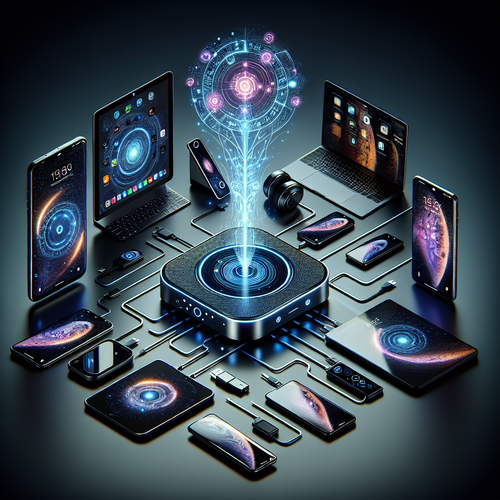
Universal Docking Station with AI Device Detection
Universal Docking Station with AI Device Detection
The tech landscape is ever-evolving, and the introduction of a universal docking station equipped with AI device detection is a game changer for users seeking convenience and versatility. This post outlines what a universal docking station is, how AI device detection works, and the advantages it brings to various users.
What is a Universal Docking Station?
A universal docking station is a hardware device that allows users to connect multiple peripherals to a single computer, typically through a USB-C or USB port. These docks can connect to displays, storage devices, and other tools, facilitating a more streamlined workspace and enhancing productivity.
How Does AI Device Detection Work?
AI device detection is an advanced feature that uses machine learning algorithms to recognize connected devices automatically. This technology improves user experience by simplifying the process of connecting and configuring peripherals. When you plug in a device, the docking station instantly identifies it and configures the necessary settings, minimizing the need for manual adjustments.
Step 1: Connectivity
- Connect the docking station to your computer using a compatible USB-C or USB port.
- Ensure that your dock is powered and that all cables are secure.
Step 2: Device Recognition
- Plug in your devices one at a time, whether they are monitors, keyboards, or external drives.
- The AI system will recognize each device and make the necessary configurations automatically.
Step 3: Customization
- For advanced users, access the docking station’s configuration settings through a dedicated management program to customize how devices are recognized.
Advantages of AI Device Detection
Integrating AI device detection into universal docking stations brings several advantages:
- Ease of Use: Eliminates the hassle of manually configuring devices every time you connect new hardware.
- Increased Compatibility: Supports a wide range of devices, ensuring that users can connect different hardware without compatibility concerns.
- Time-Saving: Reduces the setup time for workstations or home offices, allowing users to focus on productivity rather than troubleshooting.
Common Troubleshooting Steps
While the AI technology provides a seamless experience, users may encounter some common issues. Here’s a checklist to troubleshoot:
- Ensure the docking station is powered on and connected properly.
- Check that the devices are in good working condition; try connecting them to another computer if issues arise.
- Update the firmware of the docking station, as manufacturers regularly release updates to improve functionality and compatibility.
- Consult the user manual or the manufacturer’s website for specific troubleshooting steps tailored to your docking station model.
Summary Checklist
- Connect devices securely.
- Confirm AI detection is functioning.
- Troubleshoot common connectivity issues.
- Explore additional customization options for a personalized experience.
As technology advances, features like AI device detection in universal docking stations pave the way for smarter, more efficient ways to enhance our computing environments. With the ability to connect multiple devices effortlessly, it becomes an essential tool for anyone striving for a streamlined and productive workspace. For more insights on innovative tech solutions, check out our post on creating a How to Install Fluentd on Kubernetes.














